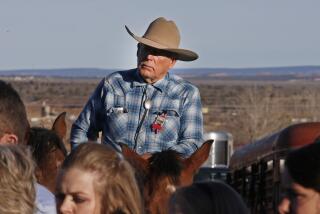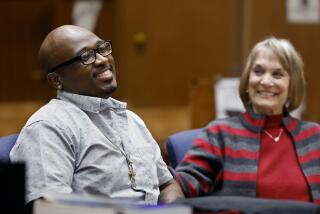Opinion: Malheur occupation ends, peaceful but not bloodless
The occupation of an Oregon wildlife refuge by anti-federal-government zealots ended Thursday just as many people (and most especially Obama administration officials) hoped it would, with the peaceful surrender of the last four holdouts.
And yet it’s not a complete vindication of the calm and patient approach taken by the FBI and allied law enforcement agencies. That’s because the peace was shattered on Jan. 26, when agents shot and killed one of the most visible figures in the occupation, Robert “LaVoy” Finicum.
The shooting, which coincided with the arrest of the two Bundy brothers who’d spearheaded the takeover, may well have hastened the departure of many of the occupiers from the Malheur National Wildlife Refuge. It’s one thing to say you’re willing to die for a cause, but it’s another to confront the very real possibility of that happening.
The Finicum shooting was a key event -- and perhaps even the key event -- affecting the course of the occupation.
That’s not to suggest the shooting wasn’t justified, or that it was. The FBI says that after raising his hands in apparent surrender, Finicum reached for a gun inside his coat, giving agents no choice but to shoot. That’s the “suicide-by-cop” version of what happened. Some of the occupiers, on the other hand, contend that the shooting was unprovoked. That’s the “execution-by-cop” version.
A camera-in-the-sky video released by the FBI shows an SUV almost hitting an officer as it tried to drive off-road around a blockade. Finicum steps out with his hands raised, but as he turns he reaches deeply into his jacket. Moments later he falls, evidently after being shot by an officer standing a few feet away.
Regardless of what exactly happened along the snowy highway that day or why it happened, the shooting was a key event — and perhaps even the key event — affecting the course of the occupation. And it turned Finicum into a martyr in the eyes of his supporters, which is what The Times’ editorial board had urged the government to avoid.
Yet it’s hard to imagine how the feds could have handled this better. Informed by the disastrous outcomes at Ruby Ridge, Idaho, and Waco, Texas, they didn’t storm the compound or try to starve out the occupiers. Instead, they waited for leaders Ammon and Ryan Bundy to leave for a community event outside the refuge, then stopped and arrested them. Other high-profile figures were also arrested after leaving Malheur (which, fittingly, is French for “misfortune”).
Given that these same people typically walked around with guns on their hips or rifles on their backs, you can’t blame the agents involved in the arrests for being prepared for a shootout. And it’s worth remembering that Finicum had pledged to die before being taken into custody, which is exactly what happened.
Most of the occupiers voluntarily left the refuge shortly after that incident, and the FBI waited at a distance for two weeks for the remaining four to emerge. It’s not clear why agents decided enough was enough Wednesday, but they did, tightening their encirclement of the refuge.
Like Finicum, the final occupier, David Fry, had said he would die before surrendering. Before a live audience of tens of thousands on YouTube, Fry said he wouldn’t leave until his grievances were heard, and he threatened to commit suicide if agents moved in. After several hours of negotiations, however, he came out to meet authorities — unarmed.
Follow Healey’s intermittent Twitter feed: @jcahealey
More to Read
A cure for the common opinion
Get thought-provoking perspectives with our weekly newsletter.
You may occasionally receive promotional content from the Los Angeles Times.







